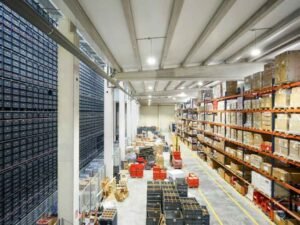Precision is not optional when it comes to treating children, and that is especially true in the field of compounding, where medications are customised to fit a child’s specific medical needs. From dosages tailored to body weight to formulations that accommodate taste sensitivities or swallowing difficulties. In years past, most of this work was done by hand. Pharmacists would spend hours carefully measuring powders, mixing liquids, and adjusting doses by tiny margins.
While their expertise remains invaluable, the manual nature of traditional compounding left room for inconsistency, particularly when dealing with the incredibly small volumes often required for paediatric patients. Today, technology is stepping in not to replace pharmacists, but to support them and improve compounding pharmacy as we know it.
From Hands-On to High-Tech
Manual preparation still has its place, but automation is fast becoming a trusted partner in compounding labs. Automated dispensing systems now offer levels of precision that simply are not possible by hand. These machines can weigh and dispense ingredients to the microgram, ensuring exactness with each batch.
It is not just about better measurements, either. These systems come equipped with sensors and built-in protocols that flag any anomalies mid-process. That means the pharmacist is not just hoping everything goes to plan but watching it play out in real-time with systems that alert them the moment something seems off.
Enhanced Formulation Through Data Integration
If automation is helping at the mechanical level, intelligent software is changing the game entirely. Today’s compounding platforms are driven by patient data. Pharmacists can input age, weight, allergies, and even metabolic profiles to generate a formula designed specifically for one child.
This is a huge leap forward. Plus, children are not just smaller adults, their bodies process drugs differently, and a standard approach can do more harm than good. With access to electronic health records and predictive data tools, pharmacists can flag potential drug interactions before they ever start mixing, adjusting dosages and delivery methods to fit the patient’s needs.
This kind of flexibility also allows for more child-friendly options, such as liquids with flavours they won’t spit out or dissolvable films that bypass the need to swallow anything at all.
Keeping It Clean and Consistent
When you are working with vulnerable immune systems, hygiene is a must. And that is where real-time quality control steps in. Barcode scanners check every ingredient before it is used, while sensors monitor air quality, humidity, and temperature inside the compounding environment.
Even the final product gets scrutinised. Technologies like near-infrared spectroscopy can test for ingredient uniformity without breaking open the medication. It is quick, accurate, and does not waste a single dose.
Streamlining Compliance and Documentation
Compliance might not be the most glamorous part of compounding, but it is absolutely crucial. Fortunately, technology has made this part easier.
Digital logging systems now track everything from when a machine was last calibrated to where each ingredient came from. This is not just good practice but often a requirement by regulatory authorities. And because it is all automated, there’s less room for clerical errors that could compromise a batch.
More importantly, streamlined documentation frees up pharmacists to spend less time filling out forms and more time focusing on their patients.
Final Thoughts
The future of compounding is looking smarter by the day. Artificial intelligence is beginning to sift through massive datasets to recommend optimal formulations based on real patient outcomes. Some labs are even exploring 3D printing to layer active ingredients into intricate, personalised dosage forms.
But no matter how advanced the tools become, the pharmacist remains at the centre of it all. Technology is just a tool. It enhances what professionals already know and sharpens what they already do. And for the children who depend on those formulations, that combination of human insight and technological precision makes all the difference.










